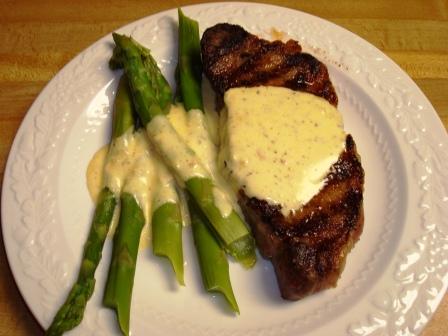french revolution food
French Revolution food plays a prominent role in the history of French cooking. Unfortunately, not all of the French people were able to enjoy the culinary creations of that time. In fact, for the French peasantry and middle class, the period of the French Revolution was synonymous with long lines in front of empty bakeries and food stores, boiled chestnuts for lunch and dinner, and soup made from the same reused bones.
So who did benefit from French Revolution food? For the most part, the French royalty, Napoleon and his court, and the upper class, all of whom began the movement which looked upon gourmet food as a status symbol. In fact, the high regard for elegant tableware, fine dining, and a sophisticated pallet remain evident until this day, as France is largely regarded as the culinary capital par excellence of the world.
 Bearnaise Sauce
Bearnaise Sauce
During the period of the French Revolution and thereafter, the usage of herbs and rich creamy French sauces increased while cooking techniques became more refined. Some of the most noted chefs of the time were Charles Maurice de Talleyrand-Perigord - Napoleon Bonaparte's personal cook - Antoine Careme, and Auguste Escoffier. However the person who has been coined the "Father of French cuisine" and who is credited with writing the very first cookbook in 1652 is Francois Pierre de la Varenne. His book of French Revolution food recipes was considered the Bible of French cooking and featured recipes in alphabetical order with detailed instructions on how to prepare each dish.
During the reign of King Louis XIV another milestone in French cooking took place, when the essentialness of using a fork for eating was introduced! Furthermore, Louis XIV implemented a change in the manner of serving a French meal. Whereas previously dishes were laid out on a table in buffet style at the beginning of a meal, now dishes were served one at a time in sequential order. In fact, Louis XIV is credited for solving the problem of cold food! Around this same time, the trend of enhancing the appearance and presentation of food, as well as the serving utensils it came in, gained momentum.
Thus it can be said that French Revolution food and the evolution of French cuisine have left their mark for eternity. If you want to enjoy modern-day French cuisine, simply travel to any region of France where you are sure to find an abundant selection of French restaurants, bistros, and outdoor cafés.









New! Comments
Have your say about what you just read! Leave me a comment in the box below.